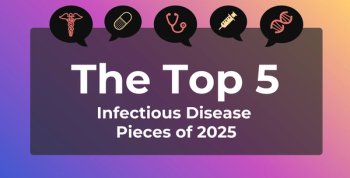
The American Journal of Managed Care
- Special Issue: Health IT
- Volume 30
- Issue SP 6
- Pages: SP478-SP482
Interventional Analytics in Skilled Nursing Facilities Associated With Reduced Readmissions
A retrospective analysis of 30-day risk-adjusted readmission rates among skilled nursing facilities (SNFs) between 2017 and 2022 compared those that had implemented an interventional analytics platform and other SNFs.
ABSTRACT
Objective: To assess differences in longitudinal profiles for 30-day risk-adjusted readmission rates in skilled nursing facilities (SNFs) associated with Penn Medicine’s Lancaster General Hospital (LGH) that implemented an interventional analytics (IA) platform vs other LGH facilities lacking IA vs other SNFs in Pennsylvania vs facilities in all other states.
Study Design: Retrospective longitudinal analysis of CMS readmissions data from 2017 through 2022, and cross-sectional analysis using CMS quality metrics data.
Methods: CMS SNF quality performance data were aggregated and compared with risk-adjusted readmissions by facility and time period. Each SNF was assigned to a cohort based on location, referral relationship with LGH, and whether it had implemented IA. Multivariable mixed effects modeling was used to compare readmissions by cohort, whereas quality measures from the fourth quarter of 2022 were compared descriptively.
Results: LGH profiles differed significantly from both state and national profiles, with LGH facilities leveraging IA demonstrating an even greater divergence. In the most recent 12 months ending in the fourth quarter of 2022, LGH SNFs with IA had estimated readmission rates that were 15.24, 12.30, and 13.06 percentage points lower than the LGH SNFs without IA, Pennsylvania, and national cohorts, respectively (all pairwise P < .0001). SNFs with IA also demonstrated superior CMS claims-based quality metric outcomes for the 12 months ending in the fourth quarter of 2022.
Conclusions: SNFs implementing the studied IA platform demonstrated statistically and clinically significant superior risk-adjusted readmission rate profiles compared with peers nationally, statewide, and within the same SNF referral network (P < .0001). A more detailed study on the use of IA in this setting is warranted.
Am J Manag Care. 2024;30(Spec Issue No. 6):SP478-SP482.
Takeaway Points
Using a retrospective longitudinal analysis of 30-day risk-adjusted readmission rates among skilled nursing facilities (SNFs) between 2017 and 2022, facilities that had implemented an interventional analytics (IA) platform were compared vs other SNFs in the same referral network and against state and national averages.
- SNFs implementing IA had longitudinal profiles for risk-adjusted readmission rates that significantly outperformed their state and national peers as well as other SNFs in the same referral network that had not leveraged IA.
- In the latest 12-month reporting period, SNFs with IA outperformed their peers on all 4 CMS claims-based quality measures examined.
In 2018, there were approximately 1.7 million skilled nursing facility (SNF) admissions in the US, of which 22% resulted in a hospital readmission within 30 days of the SNF admission date, for a total of about 377,000 readmissions.1 Medicare spending on these readmissions was about $5.2 billion, based on an average payment rate of $13,367 per readmission. It has been estimated that one-fourth to two-thirds of SNF readmissions are preventable.2
This brief report describes a comparative longitudinal cohort analysis of relative risk-adjusted readmission rates, as published by CMS, for SNFs over the period of September 2017 to December 2022.3 Risk-adjusted readmission rates were compared for cohorts consisting of SNFs associated with Penn Medicine’s Lancaster General Hospital (LGH), including a subset in which a technology designed to provide SNF staff and other health care providers with interventional analytics (IA) had been implemented, and peer SNFs in the state of Pennsylvania (PA) and the US.
METHODS
IA Platform
The technology platform used by LGH-associated SNFs included in this analysis was developed and is marketed by Real Time Medical Systems Inc, a private company headquartered in Maryland. The platform extracts structured and unstructured data from the electronic health record (EHR) of nursing home residents multiple times daily. Data are processed through more than 300 algorithms to identify “interventional moments,” which are then directly shared with nursing home staff, treating physicians, advanced practice nurses and physician assistants, and accountable care organization and/or hospital case managers, when available. These alerts are accompanied by recommended evidence-based protocols to address the issues that are placing the specific resident at risk. Thus, the system transmits the alert at a moment of opportunity, as well as the data and response protocols, directly to the providers at a time when hospital admissions are still avoidable. Data are transmitted via a cloud-based platform that can be accessed through a web-based portal or through a mobile app, all of which are Health Insurance Portability and Accountability Act compliant and maintained under the company’s HITRUST certification.
Source Data and Metrics
CMS has regularly published data sets on nursing homes that participate in the Medicare and Medicaid programs since 2016. The most recent data release on which this risk-adjusted readmission analysis relies was published on November 8, 2023, and contains data from the 12 months ending on December 31, 2022. Readmission rates were accessed from the files named “NH_QualityMsr_Claims” under the column labeled “Adjusted Score.” This value represents the SNF 30-Day All-Cause Readmission Measure (SNFRM), as defined by CMS in its 2015 technical report and a subsequent update in 2019.4,5 The SNFRM is a facility-level measure of risk-adjusted readmission rates among Medicare fee-for-service beneficiaries utilizing an SNF in a specific 12-month period. The risk adjustment is based on the likelihood of mortality, readmissions, and complications at the patient level.6 The data used herein reflect the time periods expressed in quarters from September 30, 2017, through December 30, 2022. Additional CMS data used in this report include CMS claims-based quality measures of preventable readmissions, successful discharge to the community, Medicare spending per beneficiary, and SNF health care–acquired infections resulting in a hospitalization reflecting the 12 months ending in the fourth quarter of 2022.
Cohort Definitions
Comparator SNF cohorts were defined by geography and referral relationship. The “rest of US” cohort represents the mean reported measures for each quarter across all facilities in the US, exclusive of facilities located in the state of PA. The “rest of PA” cohort represents the mean reported measures for all SNFs in PA, excluding any facilities included in the LGH referral relationship cohorts. The 2 LGH cohorts consist of any SNF for which at least 50% of that facility’s admissions were referred from LGH. The “LGH with IA” cohort represents any LGH-associated SNF for which the IA platform had been implemented before the ending date of the period and is a subset of the LGH cohort. Finally, the “LGH without IA” cohort consists of the subset of the LGH cohort facilities that did not have the IA platform implemented during the measurement period. Noting that a total of 12 SNFs shifted cohorts over the time period, there were 11,174 SNFs in the rest of US cohort, as well as 579, 12, and 9 SNFs in the PA, LGH without IA, and LGH with IA cohorts, respectively, in the fourth quarter of 2022.
Statistical Analysis
Data were aggregated by cohort and quarter using the SNF as the unit of measure. Multivariable linear mixed effects modeling was used to regress adjusted readmission rate on fixed effects for cohort (time-varying, allowing for shifts over time), quarter, and their 2-way interaction; total nurse staffing hours per resident day (TOTHRD); provider in-hospital status7 (indicator of SNF residing in the hospital); and for-profit status8 (ownership). A random intercept was also included, noting SNF as the unit of measure. Parameter estimates with 95% CIs, SEs, and individual and overall P values were generated and reported. Least square mean estimates for adjusted readmission rates by cohort and quarter were also generated, along with pairwise comparisons by cohort within specific quarters. The P values for pairwise comparisons were adjusted for multiplicity using a conservative Bonferroni correction approach. Mixed effects model results were used to generate predicted curves over time for mean adjusted readmission rate by cohort. All analyses were performed using R 4.3.1 (R Foundation for Statistical Computing) and SAS 9.4 (SAS Institute Inc). Statistical significance was taken at the 0.05 level.
RESULTS
The
Cross-Sectional Analysis of Quality Measures
Given the significant divergence in readmission rates between the cohorts, other CMS claims-based quality measures were examined for whether a similar divergence could corroborate study findings with respect to SNFRM. The 4 CMS reported claims-based quality measures were potentially preventable readmissions, successful discharge to the community, Medicare spending per beneficiary, and SNF health care–acquired infections resulting in a hospitalization. The Figure (C) provides a bar chart comparison of these 4 measures by cohort for the 12 months ending in the fourth quarter of 2022. The LGH with IA cohort was similar to or exceeded its peers in all 4 of these additional quality measures.
CONCLUSIONS
The LGH with IA cohort demonstrated a pattern of outperformance compared with the LGH without IA cohort, as well as peers at both the state and national levels, for risk-adjusted hospital readmissions and for all other core CMS claims-based quality measures for the years examined. The last year of analyzed data demonstrated the greatest absolute difference in risk-adjusted readmission rate between LGH-associated SNFs with IA and the LGH-associated SNFs without IA. The associated reductions in adjusted readmission rates were independent of several facility-level confounding factors, including provider in-hospital status, ownership type, and nurse staffing ratios. In addition to improved performance on the overall readmission metric, LGH facilities with IA also showed improved performance on 4 other CMS quality metrics covering clinical, operational, and financial performance. These metrics may not themselves be explanatory of the improved overall readmission rate, but the directional consistency of all these measures reinforces this relationship.
With respect to LGH-associated SNFs overall, there are several potential independent factors that were not examined in this analysis that could contribute to increased performance on the reported metric, if present. LGH-associated SNFs could have possessed characteristics that have been previously shown to be effective in reducing rehospitalizations that are not readily measured in the CMS data. This could include a greater investment in training and quality improvement.9 Residents discharged from LGH-associated SNFs could have had higher rates of home care follow-up than their comparative peers.10 The overall population served by LGH-associated SNFs could have been at lower risk for poor outcomes based upon known risk factors not otherwise captured in the CMS risk-adjustment methodology.11 eAppendix S6 provides counts for the total number of facilities, along with the estimated number of patients, within each cohort during the first and last quarter of the time period of interest. Also included are mean numbers for TOTHRD, in-hospital status, and for-profit status, illustrating the small number of facilities within the LGH cohorts and potential imbalance in these select SNF characteristics. To account for these potential imbalances, we did adjust for these factors in the mixed effects modeling of outcome over time by cohort. A higher proportion of patients who use LGH-associated SNFs could have been part of an accountable care organization, which may be an independent driver of risk reduction through more comprehensive discharge planning and follow-up.12
The improved quality performance of the cohort with the IA platform implemented is consistent with findings regarding the value of technology in health care settings generally13,14 and SNFs specifically.15 Additional contributing factors may include the integration of timely and important information from the IA platform, thus augmenting the nursing homes’ staff and primary care providers in making clinical decisions before the acuity requires a transfer to the hospital; technologies that integrate data on risks documented in narrative clinical notes through natural language processing have been shown to improve staff’s understanding of residents’ care needs16,17; and technologies that provide real-time alerts to give staff the time needed to mitigate or eliminate risks.18 Timely data on high-risk residents also position decision makers with contextual information essential to refine care processes and target quality improvement initiatives.19
Based on the reported $5.2 billion annual CMS costs associated with SNF hospital readmissions,1 reducing the national SNF readmission rate to the rate reported in the LGH with IA cohort in this study would represent savings of approximately $2.8 billion annually to CMS—a strong justification for further study of the impact of IA within the SNF setting.
Author Affiliations: Center for Biostatistics and Health Data Science, Department of Statistics, Virginia Polytechnic Institute and State University (DAK, TBB, WJ, ALH), Roanoke, VA; Disruptive Healthcare Solutions (SMS), Ann Arbor, MI; NewCourtland Center for Transitions and Health, University of Pennsylvania (MDN), Philadelphia, PA.
Source of Funding: Virginia Polytechnic Institute and State University and the Center for Biostatistics and Health Data Science provide contract research services to for-profit and nonprofit entities in the health care space, including research on hospital readmissions, transitional care, and nursing facilities. This manuscript was funded through a contract research agreement with The Beacon Institute (EIN: 52-1990733). Research reported in this publication/presentation/work was supported in part by the National Center For Advancing Translational Sciences of the National Institutes of Health under Award No. UL1TR003015. The content is solely the responsibility of the authors and does not necessarily represent the official views of the National Institutes of Health.
Author Disclosures: Dr Stein was chief medical officer at Real Time Medical Systems from September 2021 to December 2023 but did not have a role in the analysis of the data nor its conclusions. The remaining authors report no relationship or financial interest with any entity that would pose a conflict of interest with the subject matter of this article.
Authorship Information: Concept and design (DAK, SMS, MDN, ALH); acquisition of data (DAK, TBB, SMS); analysis and interpretation of data (DAK, TBB, WJ, MDN, ALH); drafting of the manuscript (DAK, TBB, WJ, MDN); critical revision of the manuscript for important intellectual content (TBB, MDN, ALH); statistical analysis (DAK, TBB, WJ, SMS, ALH); obtaining funding (ALH); administrative, technical, or logistic support (ALH); and supervision (MDN, ALH).
Address Correspondence to: Alexandra L. Hanlon, PhD, Virginia Polytechnic Institute and State University, 4 Riverside Circle, Roanoke, VA 24016. Email: alhanlon@vt.edu.
REFERENCES
1. Additional reporting on key staffing information and stronger payment incentives needed for skilled nursing facilities. US Government Accountability Office. July 9, 2021. Updated August 10, 2021. Accessed November 1, 2023.
2. Post-acute care. In: A Data Book: Health Care Spending and the Medicare Program. Medicare Payment Advisory Commission; July 2022:95-114. Accessed February 1, 2023.
3. Nursing homes including rehab services archived data snapshots. CMS. Accessed January 12, 2024.
4. Smith L, West S, Coots L, et al. Skilled nursing facility readmission measure (SNFRM) NQF #2510: all-cause risk-standardized readmission measure. CMS. March 2015. Accessed June 5, 2023.
5. Skilled nursing facility 30-day all-cause readmission measure (SNFRM) NQF #2510: all-cause risk-standardized readmission measure—technical report supplement – 4/2019 update. CMS. April 1, 2019. Accessed June 5, 2023.
6. Measures management system: risk adjustment. CMS. December 2017. Accessed June 5, 2023.
7. Rahman M, Zinn JS, Mor V. The impact of hospital-based skilled nursing facility closures on rehospitalizations. Health Serv Res. 2012;48(2 pt 1):499-518. doi:10.1111/1475-6773.12001
8. Grabowski DC, Feng Z, Hirth R, Rahman M, Mor V. Effect of nursing home ownership on the quality of post-acute care: an instrumental variables approach. J Health Econ. 2013;32(1):12-21. doi:10.1016/j.jhealeco.2012.08.007
9. Intrator O, Zinn J, Mor V. Nursing home characteristics and potentially preventable hospitalizations of long-stay residents. J Am Geriatr Soc. 2004;52(10):1730-1736. doi:10.1111/j.1532-5415.2004.52469.x
10. Weerahandi H, Bao H, Herrin J, et al. Home health care after skilled nursing facility discharge following heart failure hospitalization. J Am Geriatr Soc. 2020;68(1):96-102. doi:10.1111/jgs.16179
11. Walsh EG, Freiman M, Haber S, et al. Cost drivers for dually eligible beneficiaries: potentially avoidable hospitalizations from nursing facility, skilled nursing facility, and home and community-based services waiver programs. CMS. August 2010. Accessed June 5, 2023.
12. Naylor MD, Brooten D, Campbell R, et al. Comprehensive discharge planning and home follow-up of hospitalized elders: a randomized clinical trial. JAMA. 1999;281(7):613-620. doi:10.1001/jama.281.7.613
13. de Hond AAH, Leeuwenberg AM, Hooft L, et al. Guidelines and quality criteria for artificial intelligence-based prediction models in healthcare: a scoping review. NPJ Digit Med. 2022;5(1):2. doi:10.1038/s41746-021-00549-7
14. De Witte NAJ, Joris S, Van Assche E, Van Daele T. Technological and digital interventions for mental health and wellbeing: an overview of systematic reviews. Front Digit Health. 2021;3:754337. doi:10.3389/fdgth.2021.754337
15. Powell L, Sittig DF, Chrouser K, Singh H. Assessment of health information technology–related outpatient diagnostic delays in the US Veterans Affairs health care system: a qualitative study of aggregated root cause analysis data. JAMA Netw Open. 2020;3(6):e206752. doi:10.1001/jamanetworkopen.2020.6752
16. Song J, Ojo M, Bowles KH, et al. Detecting language associated with home healthcare patient’s risk for hospitalization and emergency department visit. Nurs Res. 2022;71(4):285-294. doi:10.1097/NNR.0000000000000586
17. Hobensack M, Ojo M, Barrón Y, et al. Documentation of hospitalization risk factors in electronic health records (EHRs): a qualitative study with home healthcare clinicians. J Am Med Inform Assoc. 2022;29(5):805-812. doi:10.1093/jamia/ocac023
18. Ali H, Li H. Use of notification and communication technology (call light systems) in nursing homes: observational study. J Med Internet Res. 2020;22(3):e16252. doi:10.2196/16252
19. Su MC, Chen YC, Huang MS, et al. LACE score-based risk management tool for long-term home care patients: a proof-of-concept study in Taiwan. Int J Environ Res Public Health. 2021;18(3):1135. doi:10.3390/ijerph18031135
Articles in this issue
over 1 year ago
Equity and AI Governance at Academic Medical Centersover 1 year ago
Physicians in ACOs Report Greater Documentation BurdenNewsletter
Stay ahead of policy, cost, and value—subscribe to AJMC for expert insights at the intersection of clinical care and health economics.









































